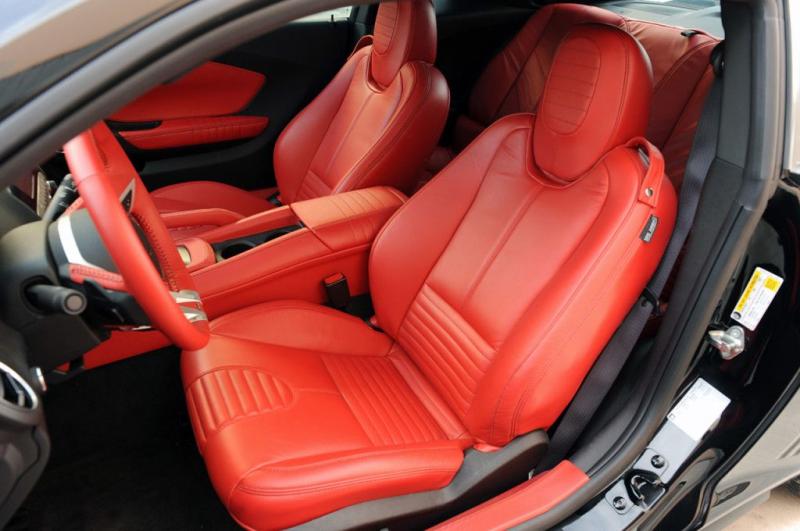Materials Used in Automotive Interior Leather
The most common material used for luxury automotive interiors is leather. Leather provides an upscale aesthetic appeal and luxurious feel that many consumers desire. The majority of leather used is cowhide leather, as it is durable and affordable. However, some automakers may use other animal hides such as calfskin or lambskin for a more premium feel. Sheepskin is also sometimes used for seat inserts and other interior trim pieces.
In addition to the type of animal hide, the thickness and finish of the leather also determines the quality and feel. Top-grain leather which uses the full thickness of the hide is considered the highest quality. Split-grain leather and bonded leather are lesser quality options that are thinner and have additional substrates added. The leather finishes can include pigmented coatings, protective sealants and conditions to achieve properties like stain resistance, UV light resistance and softness. Synthetic leather imitations made of vinyl or polyurethane are lower-cost alternatives to real leather but lack its premium look and feel.
Automotive Interior Leather Design
Automotive Interior Leather is designed with aesthetic appeal and functionality in mind. Seats, door panels, armrests and headliners are some of the primary cabin components trimmed in leather. The natural grain and textures of the hides are accentuated in the design, with different finishes like waxed, nubuck or suede bringing out unique visual qualities. Color and tone options run the gamut to suit various model brands and personalities.
Two-tone or multi-colored leather schemes with accent strips or panels break up the monotony while maintaining elegance. Contrast stitching is often used as a defining design element. Some luxury models incorporate intricate patterns, perforations, unique seaming techniques or printed designs into their leatherwork. Heated and ventilated leather seats add value with thermoregulating functions for greater comfort. High-shine, matte or distressed leather finishes provide customizable styling options as well. Ergonomic shaping and bolstering of the seats supports the body.
Automotive Interior Leather Manufacturing Process
The automotive leather manufacturing process involves several treatment stages to transform raw animal hides into the finished leather trim installed in vehicles. Once the hides are collected from slaughterhouses, they undergo preparatory stages like soaking, liming, fleshing and washing to clean and remove excess flesh and hair. Then comes the tanning process, where the hides are soaked in tanning liquors like chrome salts, vegetable or synthetic compounds to make them durable and prevent decay.
After tanning, the leather undergoes retanning, dyeing, fatliquoring and drying processes to achieve the desired colorfastness, softness and other properties. Cutting and trimming prepares the leather for specific shapes. Finishing involves operations like sanding, buffing, embossing, printing or foiling. The leather components are then sent to automakers where they molded and sewn onto seats, panels and headliners using sophisticated machinery. Fasteners, foams, frames and electronic connectors are integrated as per the vehicle design.
Finally, the complete interior trim assemblies go through quality checks, protective coatings, shrink-wrapping and packing before shipping to assembly plants. There, expert workers expertly install the leather trimmed interiors into vehicles on the production line. Strict material testing, tracing and compliance with industry standards ensure automotive leather maintains the highest quality throughout its journey from raw material to finished automobile interior. This careful production approach results in leather that enhances both the appearance and feel of upscale vehicles.
Automotive interior leather is a premium material choice that undergoes an extensive multi-step manufacturing cycle. From the raw animal hide to sophisticated vehicle integration, leather provides automakers a way to differentiate luxury brands through its aesthetic appeal, tactile qualities and functionality in cabin designs. With demand growing amongst discerning customers globally, the automotive leather industry will continue innovating diverse textures, customization options and sophisticated production techniques in the future.
Get More Insights on Automotive Interior Leather
Choose the language that resonates you-
About Author-
Money Singh is a seasoned content writer with over four years of experience in the market research sector. Known for her strong SEO background, she skillfully blends SEO strategies with insightful content. Her expertise spans various industries, including food and beverages, biotechnology, chemical and materials, defense and aerospace, consumer goods, etc. (https://www.linkedin.com/in/money-singh-590844163)
